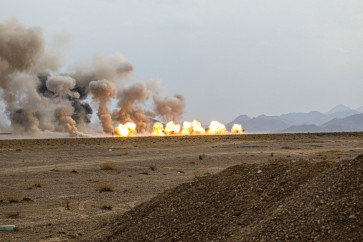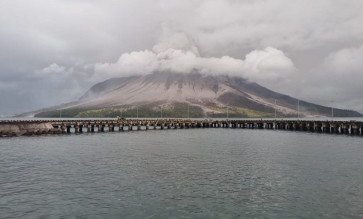Calls for better disaster mitigation plan mount
Scientists have called on all relevant parties to step in to improve disaster-mitigation measures across the country, especially in regions susceptible to disasters, following a series of destructive earthquakes that hit West Nusa Tenggara (NTB) and Central Sulawesi
Change Size

Scientists have called on all relevant parties to step in to improve disaster-mitigation measures across the country, especially in regions susceptible to disasters, following a series of destructive earthquakes that hit West Nusa Tenggara (NTB) and Central Sulawesi.
Such measures were important in a country like Indonesia, which sat on a ticking time bomb of geological disasters, in order to minimize casualties and losses, they emphasized.
“If we don’t learn from past disasters, as our population grows, the number of victims will likely increase whenever a geological disaster strikes,” said Sukmandaru Prihatmoko, the chairman of the Indonesian Geologists Association (IAGI), in Jakarta on Monday.
Referring to 2017 data from Statistics Indonesia (BPS), the geologist noted that over 262 million registered citizens lived on land located on and surrounded by some of the world’s most active tectonic plates.
Earlier this year, the Meteorology, Climatology and Geophysics Agency (BMKG) reported that Indonesia was hit by 6,929 earthquakes throughout 2017, of which at least 19 destroyed buildings and infrastructure.
Sukmandaru said that, although there was plenty of research about earthquakes in Indonesia, the problem was in “how to disseminate the reports and then use them for disaster mitigation”.
Another geologist, Trinirmalaningrum, who led a scientific expedition to map the Palu-Koro fault, the shifts of which caused the Central Sulawesi earthquakes and tsunami, said a number of regions lacked disaster-contingency plans.
“Last time I checked, before the earthquakes, such plans were only available at the National Disaster Mitigation Agency [BNPB] and had yet to be transferred to the Palu Disaster Mitigation Agency,” Trinirmalaningrum said.
Regional administrations grew mindful of the importance of disaster mitigation after the earthquakes hit NTB and Central Sulawesi, BNPB community empowerment director Lilik Kurniawan said.

“Several days ago, West Java Governor Ridwan [Kamil] summoned our agency to instruct local leaders across the province on what to do whenever a disaster, such as an earthquake or a tsunami, hits,” Lilik said.
Under the coordination of the National Development Planning Agency (Bappenas), a government team is currently drafting a masterplan to build “New Palu”, where houses and public facilities destroyed by the disasters would be relocated, Public Works and Housing Minister Basuki Hadimuljono said.
In the meantime, Basuki said, the government had come up with three options for relocation sites: Duyu and Tondo, subdistricts in Palu, and Pombewe, a subdistrict in Sigi regency.
Indonesian geologists, assisted by a team of experts from Japan, were currently conducting studies to look into the geological conditions of the areas, he said.
“[The masterplan] must be finished immediately, so perhaps we can start rebuilding [houses and public facilities] in 2019,” Basuki said, adding that the budget ranged between Rp 5 trillion (US$328 million) and Rp 6 trillion.
Authorities have set a target of two years for the reconstruction projects in Palu.
The government planned to build 1,200 semi-permanent shelters for over 60,000 displaced survivors in Central Sulawesi. Each shelter would accommodate at least 10 families and be equipped with facilities such as bathrooms and kitchens, he said.
“The temporary housing must be finished in over two months so that [survivors] can move from emergency shelters while [the government] drafts the masterplan,” Basuki said, adding that the planned permanent housing would be quake-proof.









